Pre-Production Review: 2013 Nissan Pathfinder

If you’re like most Americans, you either drive an SUV or want one. Don’t believe me? One in three vehicles sold on our shores in the past 12 months was an SUV or crossover, despite skyrocketing fuel prices. Of course, those fuel prices mean the demographic of the SUV smorgasbord has shifted from gas-guzzling truck-based off-roaders to unibody “crossovers.” Although Nissan is a little late to the soft-road party, they are countering their tardiness by doubling down on standard towing and fuel economy. What’s the reality and what’s it like to drive? Click through the jump and find out as we go off-roading and tow an Airstream.
Exterior
Despite having made the transition to unibody construction in 1996 (and back to body-on-frame in 2005) Pathfinders were recognizable as Pathfinders. The 2013 model on the other hand is instantly recognizable as a Nissan, but the Pathfinder lineage is far less obvious. The reason for this of course is that the 2013 model is a clean-sheet design that was penned at the same time as its close cousin the Infiniti JX. Nissan’s first unibody design was an attempt to compete with the Jeep Grand Cherokee, the fourth generation Pathfinder has Ford’s Explorer and the GM Lambda triplets in its crosshairs. Mission accomplished.
Interior
The outgoing Pathfinder shared its interior with the Frontier and as a result had a more rugged, lower-rent truck-like interior. The 2013 Pathfinder’s transformation is much like GM’s GMT360 to Lambda transformation. The new Pathfinder has an upscale interior with near-luxury fit and finish and a more sedan-like cockpit. Parts sharing with the Infiniti JX35 is high with air vents, switch gear, seat frames and LCD shared between the two. This top-down parts sharing is good for Pathfinder shoppers, but only time will tell if there is enough differentiation between the Pathfinder and JX to make Infiniti shoppers happy. As with the Infiniti JX, seat comfort declines the further right and rearward you go. The front passenger seat lacks the power lumbar adjustment of the driver’s seat. The second row seats are comfortable, but not as padded as the front seats with cushions designed for children or shorter passengers. As with most three-row crossovers the last row should be reserved for small children, coworkers you hate or your mother-in-law.
Infotainment
For Pathfinder duty, Nissan lifted their corporate infotainment systems without much change. The base $28,270 Pathfinder S combines a 6-speaker audio system and in-dash 6-CD changer. The base model’s glaring omissions include the lack of: Bluetooth, AUX input and a USB/iPod interface. Stepping up one trim-level (to the $31,530 SV) gets the driver a 7-inch LCD, Bluetooth, AUX input and a USB/iPod interface at the cost of the 6-disc changer (all other models get a single disc MP3/CD player.) Hopping up to the SL Premium (Nissan hasn’t released pricing on this one) gets the buyer the same 13-speaker Bose sound system as the mid-level trims of Infiniti JX35, right down to the Bose subwoofer. As long as you don’t need your bass to rattle your windows, the system is impressive.
Should navigation be on your short list, you’ll need to jump up to the $39,170 Platinum. Doing so gets you an 8-inch high-resolution touch-screen display pared with the Bose system and an in-dash DVD player. This Nissan system is one of the more responsive and intuitive systems on the market providing easy iPod/USB integration and an interesting novelty in the automotive world: a navigation joystick/wheel, steering wheel navigation controls and a touchscreen. This allows you to choose whether you enter data on the steering wheel, use the joystick/wheel device or just touch the screen.
Pricing
Nissan has set the starting price for the Pathfinder S (FWD) at $28,270, undercutting all the primary competition. As with most CUVs, beware, prices build quickly. Due to the way Nissan has structured the options list, the minimum point of entry for navigation is $39,170, nearly $4,000 more than an Explorer but only about $1,000 more than a Traverse. Most of the models we had on hand to test were well equipped SL models around $38,000 or fully loaded Platinum models around $44,000.
Drivetrain
Under the hood lies Nissan’s ubiquitous 3.5L V6 tuned to 260HP and 240lb-ft of torque, 5HP and 8lb-ft less than the same engine in the JX35. In addition to being down a few ponies compared to its luxury cousin, it’s also the least powerful in its class. As you would expect from Nissan, power is sent to the front wheels via a CVT, but this one has been revised to handle a 5,000lb tow rating. The new transmission uses a steel chain instead of a steel belt for durability, but importantly the ratios stay more-or-less unchanged. Nissan’s reps confirmed that the transmission is the primary reason for the JX35 and Pathfinder’s different tow ratings.
If towing with a FWD crossover doesn’t sound like fun, $1,600 buys you AWD. The system normally defaults to FWD mode for improved fuel economy but as a (small) nod to the Pathfinder’s history, the system has a lock mode that mechanically connects the front and rear differentials so that power flows 50:50 (front:rear) in all situations. Unlike more traditional transfer case setups, the clutch-pack allows a small amount of slip so the system can be used on dry pavement without binding. Leaving the AWD system in “Auto” keeps power to the front unless fairly significant slippage occurs (in order to improve fuel economy). The result is a decidedly FWD feel under most circumstances.
Drive
The engine right-sizing, CVT and unibody combine to drop the curb weight by 500lbs to 4,149lbs for the base 2WD model to 4,471lbs in the AWD Platinum. The weight reduction and other efficiency changes pay dividends with fuel economy rising from 15/22 and 14/20 (2WD/4WD) to 20/26 and 19/25. Compared to the unibody Explorer, the Nissan bests the Ford by 3MPG in the city and 1 on the highway in 2WD form and 1/2 mpg with AWD. However, if you seek crossover-fuel-sipping-nirvana, look no further than Ford’s 28MPG 2.0L Ecoboost Explorer.
Because the Pathfinder started as a rugged off-road vehicle, Nissan felt it necessary to take us to a cattle ranch to spend some time climbing hills and towing trailers. There are two realities we must keep in mind. First, automakers sometimes go overboard trying to prove that a new vehicle matches the older vehicle’s abilities. Second, the majority of shoppers will never tow or take the vehicle off-road so it really doesn’t matter anyway.
The first I noticed during our romp on the steep grassy hills was: ground clearance has dropped from 9-inches in the 2012 to 6.5 (lower than the Explorer’s 7.6 and the Traverse’s 7.2). Off-roading angles also decrease from 28/23/22 to 14/22/16 (approach/departure/break-over). The result is a Pathfinder that is more stable on-road thanks to a lower center of gravity, but a vehicle that may have difficulties going over the hill and through the woods. Does that matter to anyone? Probably not.
The second thing our adventure demonstrated was: the CVT and final drive ratio favor fuel economy. How so? By skewing the range toward the high-end of the CUV competition. The result is an effective low ratio of 13.5:1 that is notably higher than the Explorer’s 15.2:1 and a higher final gear of 2.0:1 vs the Explorer’s lower 2.2:1. The result is better fuel economy than the Explorer on the highway, but when we encountered steep terrain on the ranch, the Pathfinder felt out of its element and out of breath.
Back on the highway the Pathfinder presents its best argument for success: road manners. The suspension is firm for a crossover but not uncomfortable and was well composed over a variety of broken road surfaces, something that could not be said about the previous generation Pathfinder. Wind and road noise have also been drastically reduced in the cabin giving the Nissan a premium feel not unlike the Buick Enclave.
The towing demonstration was largely ignored by my journalist peers, but my own towing needs caused my interest to be piqued. I was initially concerned that the taller gearing of the CVT and the lower torque rating of the Nissan V6 would be a problem, but I was only half right. Unless you’re towing at capacity in San Francisco, the CVT makes a strangely enjoyable tow partner. Takeoffs are slow due to the gearing choices, and Ford’s Ecoboost V6 feels decidedly more confidant, but the CVT has advantages. When hill climbing it’s easier to maintain a constant speed because the CVT can constantly vary the ratio to keep you from doing the “slow down, down-shift, speed up, up-shift, slow down” ballet that I’m used to when towing with my GMT360 SUV.
While the Pathfinder may have shed much of its heritage in its fourth generation, so has everyone else. Unfortunately, this also means a select few shoppers (like yours truly) that need to tow 6,500lbs regularly with an AWD mid-size SUV are left with the Dodge Durango as your only new car choice in this segment (until Chrysler kills it in 2015). Instead Nissan has delivered exactly what 95% of SUV/CUV shopper want: 20% better fuel economy, some rugged good looks and the ability to handle Tahoe when the ski-bug bites. While I will mourn the loss of the Pathfinder along with a certain segment of rock-crawlers in the square states, you should put the Pathfinder at the top of your shopping list.
Nissan invited me to a local Pathfinder event, paid for the hotel and stuffed us full of food.
Specifications as tested
0-30:3.6 Seconds
0-60: 6.9 Seconds
1/4 Mile: 16.16 @ 91 MPH
Average Fuel Economy: 20.5 MPG over 189 Miles

More by Alex L. Dykes
Latest Car Reviews
Read moreLatest Product Reviews
Read moreRecent Comments
- Calrson Fan Jeff - Agree with what you said. I think currently an EV pick-up could work in a commercial/fleet application. As someone on this site stated, w/current tech. battery vehicles just do not scale well. EBFlex - No one wanted to hate the Cyber Truck more than me but I can't ignore all the new technology and innovative thinking that went into it. There is a lot I like about it. GM, Ford & Ram should incorporate some it's design cues into their ICE trucks.
- Michael S6 Very confusing if the move is permanent or temporary.
- Jrhurren Worked in Detroit 18 years, live 20 minutes away. Ren Cen is a gem, but a very terrible design inside. I’m surprised GM stuck it out as long as they did there.
- Carson D I thought that this was going to be a comparison of BFGoodrich's different truck tires.
- Tassos Jong-iL North Korea is saving pokemon cards and amibos to buy GM in 10 years, we hope.





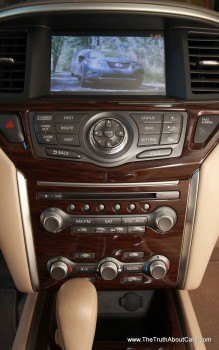


















































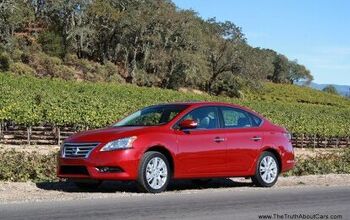
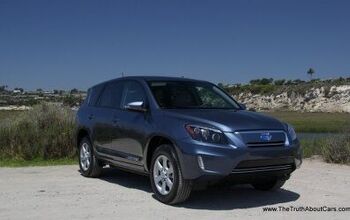
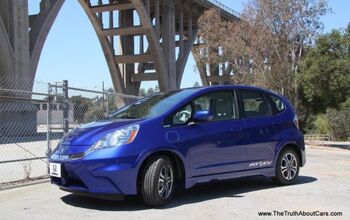
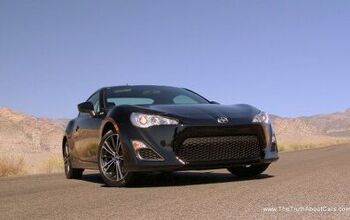
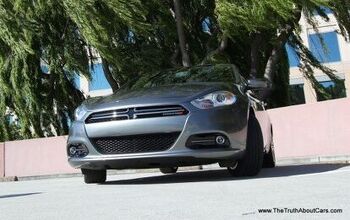










Comments
Join the conversation
My wife put 177k on her '99 Pathefinder and I drove an '04 for a couple of years, so I have been watching Nissan's transformation of this iconic truck into a CUV with keen interest. Like Ford, they appear to understand that off-roading prowess is less important to customers than being a family hauler with towing capacity while being an alternative to a minivan. Off-roaders still have the very capable Xterra to chose from Nissan's lineup, and this new Pathfinder should be quite competitive in the market where the real money is. PS -- Great video review Alex. I continue to be impressed at how much information you convey in about 10 minutes while still being entertaining. You represent the viewpoint of the common man much better than any of the other on-line reviewers, nicely balancing performance and driveability with the stuff that most of us really care about, which is controls, comfort, and utility.
My parents have an 08 Pathfinder currently, and I can tell you just from photos that this will be a better car. I've driven their Pathfinder and found it much too truck-like and unwieldy. It felt as though I was driving something much larger/ponderous than I was (though the 3rd gen Path is very tall). It drove more poorly than a late 90s Montero I test drove once. The Pathfinder interior was not luxurious, the ride unrefined, panel gaps too large, engine too loud, V8 thirst with V6 power, etc. The WORST thing about their Pathfinder by a mile though, are the interior trim rattles. They're constant and difficult to find.